What Term Is Used To Describe Animals That Are Primarily Active During Dawn And Dusk?
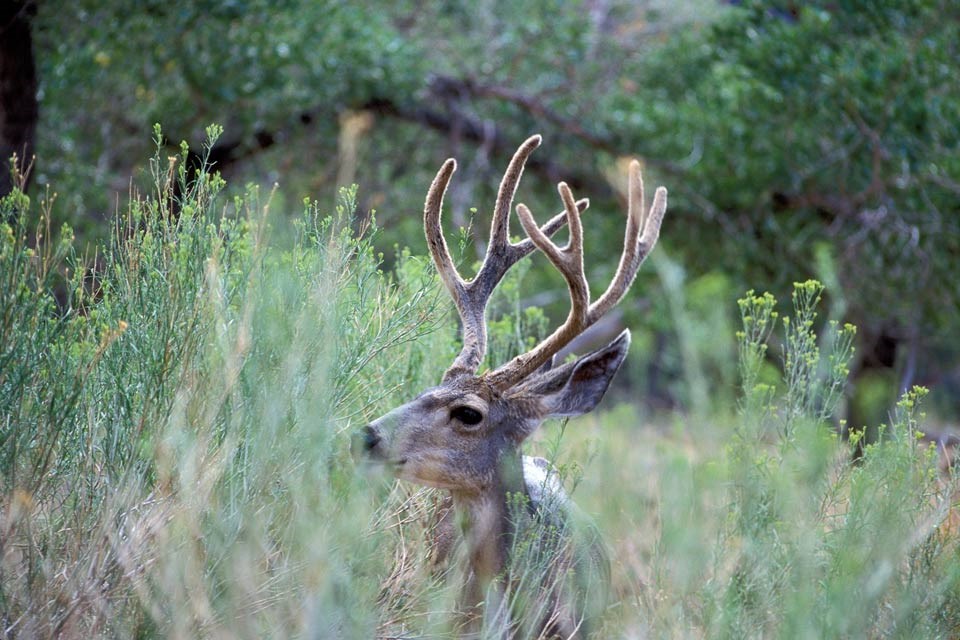
NPS Photo by Neal Herbert
Although you may not see many during your visit, Natural Bridges is home to a broad diverseness of animals. Birds, desert cottontails, and lizards are common and may be seen by a majority of visitors. Many desert animals are either inactive during daylight hours or wary of humans, then sightings can be special events.
Select a Park:
Select a Species Category (optional):
Early Bird or Night Owl?
The animals at Natural Bridges have adjusted to the desert's harsh climate by existence active at cooler parts of the twenty-four hours. Most animals are nocturnal, or generally active at night. This can also be a way to avert predators. Nocturnal animals include kangaroo rats and other pocket-sized desert rodents, skunks, foxes, bobcats, mountain lions, and bats.
Several animals are crepuscular, or active at dawn and dusk. Dawn and sunset are cooler times of the 24-hour interval and the one-half-low-cal helps animals avoid predators while still being able to see food. Some animals are crepuscular because their prey is crepuscular. Crepuscular animals include mule deer, coyotes, porcupines, desert cottontails, black-tailed jackrabbits, and many songbirds.
A few desert animals are diurnal, or active during the day. These include rock squirrels, antelope squirrels, chipmunks, lizards, snakes, and hawks. Many animals take a temperature range in which they are active, and so their active times of twenty-four hours change with the seasons. Snakes and lizards become into a country of torpor (inactivity) during the winter, are diurnal during the late jump and early fall, and get crepuscular during the oestrus of summer. Many insects alter their times of activity. For example, mosquitoes may be out all night, all day, or at dawn or dusk, depending on temperature.
Humans are diurnal, simply should become crepuscular while visiting the park. Not but will your chances of seeing wild animals be greater, only your hike will be more than enjoyable in the libation morning. This also helps avoid afternoon thunderstorms in the summer. If you're nocturnal, we're too open up after night and accept internationally-recognized night skies!
Small Mammals
Modest mammals do well in the park's hot and dry out climate. Because of their size, these animals have an easier fourth dimension finding shelter and require less food and water to live. Rodents are numerous, with ix species of mice and rats alone. Mutual small mammals are the desert cottontail, deer mouse, white-tailed antelope squirrel, chipmunk, rock squirrel, and bats.
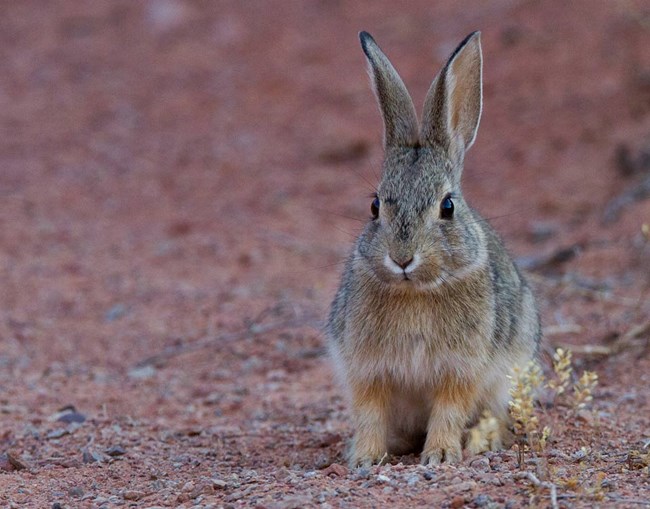
NPS Photo
Spotlight: Desert Cottontail
Spotter for cottontails hiding in the brushy desert scrub. Cottontails are named for the white patch of fur on their tail that resembles a cotton ball. They raise this white tail when danger is near, which serves equally an alarm signal to other cottontails. These rabbits can sew together to 20 mph in a zigzag pattern to escape predators! Cottontails vest to the order of mammals called rodents - a group of animals whose teeth never stop growing! Rabbits use their sharp, e'er-growing teeth to nibble twigs and grasses. These hirsuite critters keep themselves cool in the hot desert sun by radiating trunk oestrus through their large ears.
Large Mammals
Large mammals, like mule deer and mount lions, must roam vast territories in order to discover food and water. They sometimes drift to nearby mountains during summertime. Mule deer are the most common big mammal and are oft seen on the road coming into the park. Large predators, including mountain lions, bobcats, coyotes, and blackness bears, are less unremarkably seen, but their tracks are oft spotted.
Reptiles
Along with cacti and sand dunes, reptiles are icons of the desert. Reptiles are cold-blooded, regulating their body temperature with sunshine and shade rather than internally. Keeping warm in the desert requires little work during summer, so reptiles tin can use their energy to notice food and reproduce. During common cold months, reptiles hide. The merely reptiles found in Natural Bridges are snakes and lizards. Visitors in summer months may see common sagebrush lizards, plateau lizards, side-blotched lizards, and possibly a prairie rattlesnake.
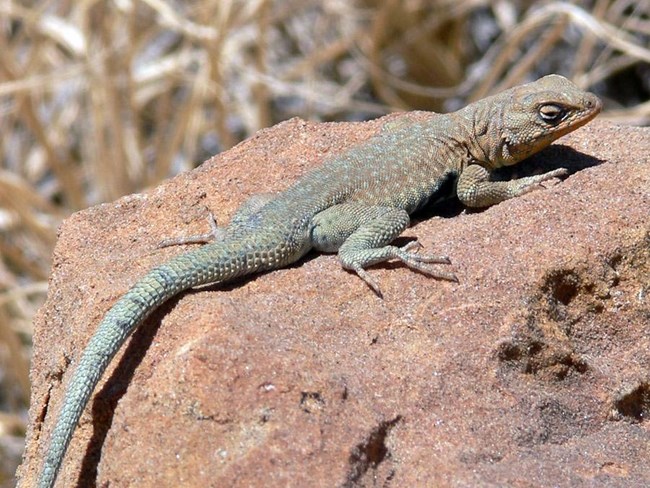
NPS photo
Spotlight: Side-blotched Lizards
Await for these iv- to six-inch lizards sunbathing on warm summer days. Like most lizards, side-blotched lizards sit are opportunist hunters, waiting for prey to wander close. These lizards are easy to identify, with dark-brown scales and tell-tale dark blue blotches behind the front legs. They hibernate in winter, just, considering of their small size, are able to warm up rapidly and move around on warm days.
Amphibians
Amphibians may exist the last thing people call up of when they visit Natural Bridges. Withal, the area is home to a few varieties of toad and one species of salamander. These animals have reward of intermittent springs and pools when they are available and remain dormant during drier periods. Witnessing a chorus of toads in White Canyon may exist i of the almost memorable experiences coulee country has to offer.
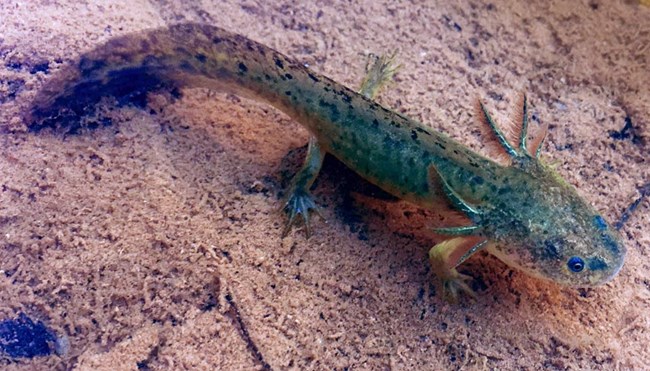
NPS Photograph past Paula Messing
Spotlight: Tiger Salamander
Although tiger salamanders are hard to spot, they are a fascinating function of Natural Bridges' ecosystem. These salamanders are typically three to vi inches long and take blackness and orange splotches similar tigers. They require water for convenance and spend nearly of their life in burrows waiting for enough water. Young, or larval, salamanders have big heads with frilled external gills and iv legs. In stock ponds, they may never fully mature and are able to reproduce in this stage. In ephemeral pools, the larvae volition mature, but information technology can take i to three years.
Birds
Birds are the most visible animals in Natural Bridges. Even on the hottest summer day, turkey vultures, ravens, and white-throated swifts circumvolve above the canyons. Many birds concentrate in riparian areas on the canyon floors. During jump and summer, songs from birds like xanthous-breasted chats, spotted towhees, and canyon wrens may be heard. Pinyon jays, scrub jays, and blackness-throated gray warblers are commonly seen in pinyon-juniper woodlands. American kestrels may be seen on high perches, scanning for prey.
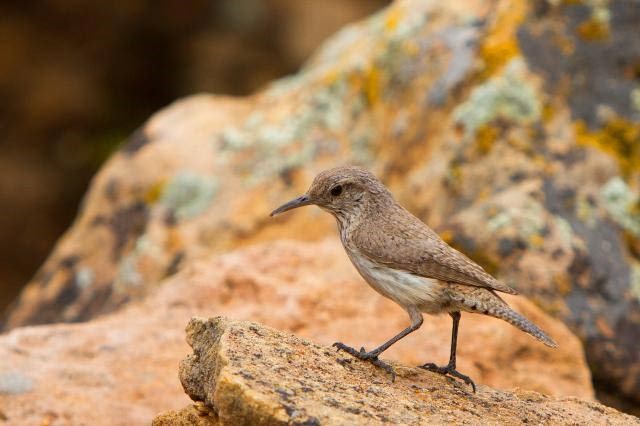
NPS Photo past Andrew Kuhn
Spotlight: Rock Wren
Stone Wrens live in a earth of cracks and nooks on rocky slopes and outcrops. They have a pale gray back, faintly striped chest, long tail, and long, thin bill. Rock wrens utilize their long bill to easily pick spiders and other insects out of narrow crevices. Both male and female rock wrens build a walkway of small, flat stones that lead to their cupped nest, located in a stone fissure or hole. They are frequently seen bobbing up and down, peculiarly when alarmed.
Safe Wildlife Viewing
Never arroyo or handle wild fauna of any kind. Keep all food stowed, especially in campsites.
Wildlife often acquit mortiferous diseases, including Hantavirus, bubonic plague and rabies, and may become aggressive without alarm. Do not approach animals to have photographs and teach children non to chase or pick up animals.
You tin explore these subjects from national parks around the country.
Related Articles
Source: https://www.nps.gov/nabr/learn/nature/animals.htm
Posted by: edwardshimpat.blogspot.com

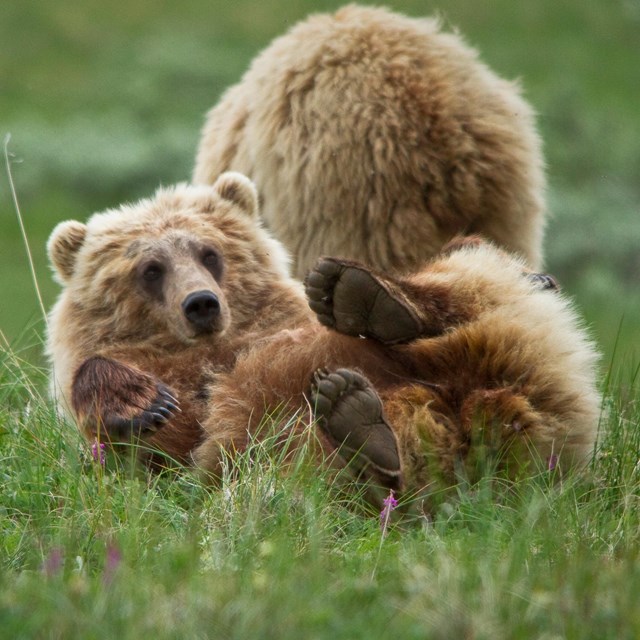
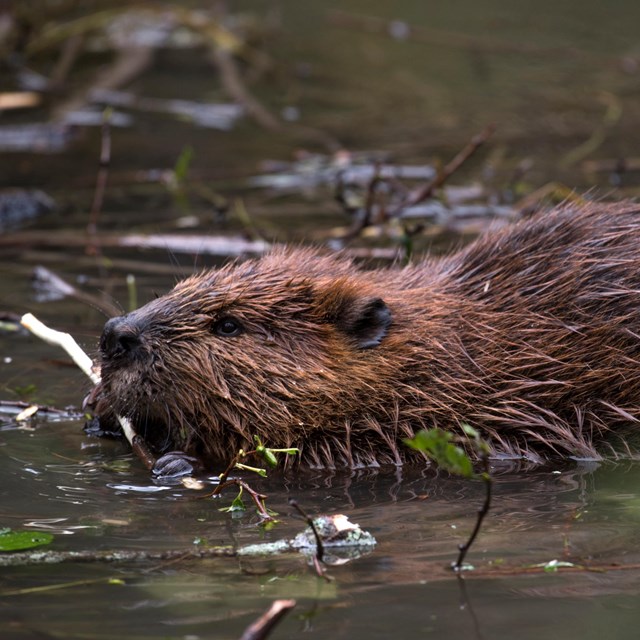
0 Response to "What Term Is Used To Describe Animals That Are Primarily Active During Dawn And Dusk?"
Post a Comment